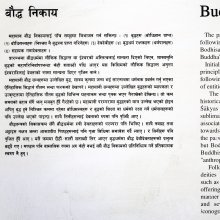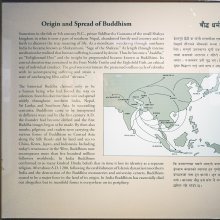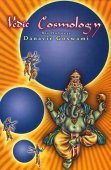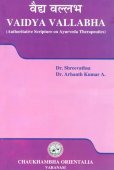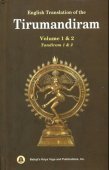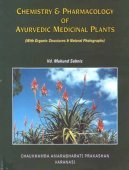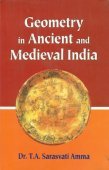Siddhanta, Siddhānta, Siddha-anta, Siddhamta: 25 definitions
Introduction:
Siddhanta means something in Buddhism, Pali, Hinduism, Sanskrit, Jainism, Prakrit, the history of ancient India, Marathi. If you want to know the exact meaning, history, etymology or English translation of this term then check out the descriptions on this page. Add your comment or reference to a book if you want to contribute to this summary article.
Images (photo gallery)
In Hinduism
Nyaya (school of philosophy)
Source: Wisdom Library: NyāyaSiddhānta (सिद्धान्त) refers to a “conclusion” (an established tenet). It is one of the sixteen categories of discussion (padārtha) according to the doctrine of the Nyāya-sūtras by Akṣapāda. The sixteen padārthas represent a method of intellectual analysis and categorize everything that is knowable and nameable.
Source: Shodhganga: A study of Nyāya-vaiśeṣika categoriesSiddhānta (सिद्धान्त, “doctrine”) refers to the sixth of the sixteen padārthas (“categories”) in the first chapter of Gautama’s Nyāyasūtra (2nd century CE). The subject which is established through rule and pramāṇa is called Siddhānta (doctrine). According to Gautama, that is called siddhānta (doctrine) which is established on the authority of any system, on assumption or on implication. If an opinion is accepted as true after discussion, that is siddhānta (doctrine). As for example, according to Nyāya-Vaiśeṣika system there are four pramāṇas, it is a siddhānta (doctrine).
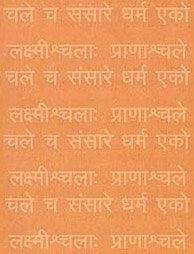
Nyaya (न्याय, nyaya) refers to a school of Hindu philosophy (astika), drawing its subject-matter from the Upanishads. The Nyaya philosophy is known for its theories on logic, methodology and epistemology, however, it is closely related with Vaisheshika in terms of metaphysics.
Vyakarana (Sanskrit grammar)
Source: Wikisource: A dictionary of Sanskrit grammarSiddhānta (सिद्धान्त).—Established tenet or principle or conclusion, in the standard works of the different Shastras.
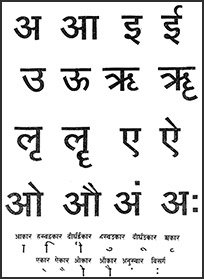
Vyakarana (व्याकरण, vyākaraṇa) refers to Sanskrit grammar and represents one of the six additional sciences (vedanga) to be studied along with the Vedas. Vyakarana concerns itself with the rules of Sanskrit grammar and linguistic analysis in order to establish the correct context of words and sentences.
Jyotisha (astronomy and astrology)
Source: Wikibooks (hi): Sanskrit Technical TermsSiddhānta (सिद्धान्त).—Technical treatise; in particular, a comprehensive treatise on astronomy. Note: Siddha-anta is a Sanskrit technical term used in ancient Indian sciences such as Astronomy, Mathematics and Geometry.

Jyotisha (ज्योतिष, jyotiṣa or jyotish) refers to ‘astronomy’ or “Vedic astrology” and represents the fifth of the six Vedangas (additional sciences to be studied along with the Vedas). Jyotisha concerns itself with the study and prediction of the movements of celestial bodies, in order to calculate the auspicious time for rituals and ceremonies.
Vaishnavism (Vaishava dharma)
Source: Pure Bhakti: Bhagavad-gita (4th edition)Siddhānta (सिद्धान्त) refers to “conclusive truth; authoritative principle of scripture”. (cf. Glossary page from Śrīmad-Bhagavad-Gītā).
Source: Pure Bhakti: Brhad BhagavatamrtamSiddhānta (सिद्धान्त) refers to:—The consummate truth or perfect conclusion of all knowledge; philosophical doctrine or precept; demonstrated conclusion; established end. (cf. Glossary page from Śrī Bṛhad-bhāgavatāmṛta).
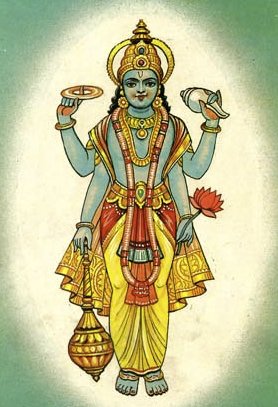
Vaishnava (वैष्णव, vaiṣṇava) or vaishnavism (vaiṣṇavism) represents a tradition of Hinduism worshipping Vishnu as the supreme Lord. Similar to the Shaktism and Shaivism traditions, Vaishnavism also developed as an individual movement, famous for its exposition of the dashavatara (‘ten avatars of Vishnu’).
Ayurveda (science of life)
Source: gurumukhi.ru: Ayurveda glossary of termsSiddhānta (सिद्धान्त):—[siddhāntaḥ] A demonstrated truth established after several examinations and reasoning by scientists

Āyurveda (आयुर्वेद, ayurveda) is a branch of Indian science dealing with medicine, herbalism, taxology, anatomy, surgery, alchemy and related topics. Traditional practice of Āyurveda in ancient India dates back to at least the first millenium BC. Literature is commonly written in Sanskrit using various poetic metres.
Yoga (school of philosophy)
Source: ORA: Amanaska (king of all yogas): A Critical Edition and Annotated Translation by Jason BirchSiddhānta (सिद्धान्त) refers to “philosophy”, according to the Yogayājñavalkya 2.8-10ab.—Accordingly, while discussing the study of the Upaniṣads and the Purāṇas: “[In the case of Brahmins,] the wise say that the study of philosophy (siddhānta), [which is the sixth Niyama in this yoga system,] is the study of the Upaniṣads. Like Brahmins, they prescribe the study of [the same] philosophy (siddhānta) for Kṣatriyas. And †...† for good Vaiśyas, possessed of virtuous conduct, as well as [those] Śūdras, women and ascetics who maintain their religious duties, the wise say that the study of philosophy (siddhānta) is the study of the Purāṇas”.

Yoga is originally considered a branch of Hindu philosophy (astika), but both ancient and modern Yoga combine the physical, mental and spiritual. Yoga teaches various physical techniques also known as āsanas (postures), used for various purposes (eg., meditation, contemplation, relaxation).
In Buddhism
Buddhist philosophy
Source: Google Books: A History of Indian Logic (Buddhist Philosophy)Siddhānta (सिद्धान्त) refers to a “tenet”, “truth” or ”conclusion” (within a debate), according to Upāyakauśalyahṛdaya, an ancient work on the art of debate composed by Bodhisattva Nāgārjuna.—The first chapter [i.e., “an elucidation of debate (vāda-visadīkaraṇa)”] consists of eight sections which treat respectively of (1) an example (udāharaṇa), (2) a tenet, truth or conclusion (siddhānta), (3) the excellence of speech (vākya praśaṃsā), (4) the defect of speech (vākya-doṣa), (5) the knowledge of inference (anumāna or hetujñāna), (6) the appropriate or opportune speech (samayocita-vākya), (7) the fallacy (hetvābhāsa) and (8) the adoption of a fallacious reason (duṣṭa-vākyānusaraṇa).
Note: The siddhānta (tenet, truth or conclusion) is of four kinds, viz. (1) that accepted by all the schools (sarvatantra siddhānta), (2) that accepted by a particular school (pratitantra siddhānta), (3) that accepted hypothetically (adhikaraṇa siddhānta) and (4) that which is implied or accepted on assumption (abhyupagama siddhānta).
-
In Jainism
General definition (in Jainism)
Source: The University of Sydney: A study of the Twelve Reflections1) Siddhānta (सिद्धान्त) refers to “(one’s own) doctrine”, according to the 11th century Jñānārṇava, a treatise on Jain Yoga in roughly 2200 Sanskrit verses composed by Śubhacandra.—Accordingly, “Examination of the instruction [of the Jina] is considered to be when, through the application of the instruction of the omniscient one (i.e. the Jina), [the meditator] reflects upon the true state of objects laid down in his doctrine (sva-siddhānta-prasiddha)”.
2) Siddhānta (सिद्धान्त) refers to the “Jain canon”, according to the Jñānārṇava.—Accordingly, “Capable soul, for purification of the mind, you must hold strongly in the mind the reflections which are established by the gods of gods (i.e. the Tīrthaṅkaras) in the great scripture of the [Jain] canon (siddhānta)”.

Jainism is an Indian religion of Dharma whose doctrine revolves around harmlessness (ahimsa) towards every living being. The two major branches (Digambara and Svetambara) of Jainism stimulate self-control (or, shramana, ‘self-reliance’) and spiritual development through a path of peace for the soul to progess to the ultimate goal.
India history and geography
Source: Cologne Digital Sanskrit Dictionaries: Indian Epigraphical GlossarySiddhānta.—(CII 4), ‘an established doctrine’; sometimes used to indicate the Śaiva doctrine or religion (SITI). Cf. Lākula-siddhānta (EI 32), doctrine of the Śaiva teacher Lakula (Lakulīśa). Note: siddhānta is defined in the “Indian epigraphical glossary” as it can be found on ancient inscriptions commonly written in Sanskrit, Prakrit or Dravidian languages.

The history of India traces the identification of countries, villages, towns and other regions of India, as well as mythology, zoology, royal dynasties, rulers, tribes, local festivities and traditions and regional languages. Ancient India enjoyed religious freedom and encourages the path of Dharma, a concept common to Buddhism, Hinduism, and Jainism.
Languages of India and abroad
Marathi-English dictionary
Source: DDSA: The Molesworth Marathi and English Dictionarysiddhānta (सिद्धांत).—m (S) Demonstrated conclusion; established truth; the determination or result of investigation or discussion. 2 A common name of eighteen treatises upon astronomy, astrology, algebra, and other sciences; as sūryasiddhānta mārtaṇḍa- siddhānta, kēśavīsiddhānta &c. 3 In modern translations. Theorem.
Source: DDSA: The Aryabhusan school dictionary, Marathi-Englishsiddhānta (सिद्धांत).—m Established truth; theorem. A name for eighteen treatises upon different sciences.
Marathi is an Indo-European language having over 70 million native speakers people in (predominantly) Maharashtra India. Marathi, like many other Indo-Aryan languages, evolved from early forms of Prakrit, which itself is a subset of Sanskrit, one of the most ancient languages of the world.
Sanskrit dictionary
Source: DDSA: The practical Sanskrit-English dictionarySiddhānta (सिद्धान्त).—
1) the established end.
2) the demonstrated conclusion of an argument, established view of any question, the true logical conclusion (following on the refutation of the Pūrvapakṣa).
3) a proved fact, established truth, dogma, settled doctrine.
4) any established text-book resting on conclusive evidence; मध्येसभं दैवविदः सर्वसिद्धान्त- पारगाः (madhyesabhaṃ daivavidaḥ sarvasiddhānta- pāragāḥ) Śiva B.6.8. °कोटिः (koṭiḥ) f. the point in an argument which is regarded as a logical conclusion. °कौमुदी (kaumudī) Name of a celebrated commentary on Pāṇini's grammar by भट्टोजी- दीक्षित (bhaṭṭojī- dīkṣita). °पक्षः (pakṣaḥ) the logically correct side of an argument.
Derivable forms: siddhāntaḥ (सिद्धान्तः).
Siddhānta is a Sanskrit compound consisting of the terms siddha and anta (अन्त).
Source: Cologne Digital Sanskrit Dictionaries: Shabda-Sagara Sanskrit-English DictionarySiddhānta (सिद्धान्त).—m.
(-ntaḥ) 1. Demonstrated conclusion, established truth: it may be either the result of an argument in which one opinion is refuted and another undeniably established; or the concurrent doctrine of all the authorities on any subject similarly interpreted. 2. Any fixed or established text-book resting on conclusive arguments. E. siddha completed, perfect, and anta end, conclusion.
Source: Cologne Digital Sanskrit Dictionaries: Benfey Sanskrit-English DictionarySiddhānta (सिद्धान्त).—i. e. siddha-anta, m. Demonstrated conclusion, established truth, reliable doctrine; doctrine, [Lassen, Anthologia Sanskritica.] 2. ed. 90, 40.
Source: Cologne Digital Sanskrit Dictionaries: Cappeller Sanskrit-English DictionarySiddhānta (सिद्धान्त).—[masculine] established end or truth, dogma, axiom (often °— & —° in titles of books).
Source: Cologne Digital Sanskrit Dictionaries: Aufrecht Catalogus Catalogorum1) Siddhānta (सिद्धान्त) as mentioned in Aufrecht’s Catalogus Catalogorum:—jy. by Āryabhaṭa q. v.
2) Siddhānta (सिद्धान्त):—stotra by Haridāsa. Śg. 1, 152.
Source: Cologne Digital Sanskrit Dictionaries: Monier-Williams Sanskrit-English Dictionary1) Siddhānta (सिद्धान्त):—[from siddha > sidh] a etc. See sub voce
2) [from sidh] b m. established end, final end or aim or purpose (cf. sama-s), (cf. rāddhānta), demonstrated conclusion of an argument (or the 4th member of a syllogism following on the refutation of the pūrva-pakṣa q.v.), settled opinion or doctrine, dogma, axiom, received or admitted truth (of four kinds See sarva-tantra-s?, prati-tantra-s, adhikaraṇa-s, abhyupagama-s), [Mahābhārata; Kapila; Sarvadarśana-saṃgraha] (cf. [Indian Wisdom, by Sir M. Monier-Williams 64])
3) [v.s. ...] any fixed or established or canonical text-book or received scientific treatise on any subject ([especially] on astronomy and mathematics; often ifc., as the following 9, Brahma-siddhānta, Sūrya-siddhānta, Soma-siddhānta, Bṛhaspati-siddhānta, Garga-siddhānta, Nārada-siddhānta, Parāśara-siddhānta, Pulastya-siddhānta, Vasiṣṭha-siddhānta; or the following 5, Siddhāntas, Pauliśa-siddhānta, Romaka-siddhānta, Vāsiṣṭha-siddhānta, Śaura-siddhānta, and Paitāmaha-siddhānta), [Varāha-mihira’s Bṛhat-saṃhitā; Sarvadarśana-saṃgraha; Indian Wisdom, by Sir M. Monier-Williams 175]
4) [v.s. ...] a [particular] class of Buddhist and Jaina works.
Source: Cologne Digital Sanskrit Dictionaries: Yates Sanskrit-English DictionarySiddhānta (सिद्धान्त):—[siddhā-nta] (ntaḥ) 1. m. Demonstrated conclusion; established truth.
Source: DDSA: Paia-sadda-mahannavo; a comprehensive Prakrit Hindi dictionary (S)Siddhānta (सिद्धान्त) in the Sanskrit language is related to the Prakrit word: Siddhaṃta.
[Sanskrit to German]
Sanskrit, also spelled संस्कृतम् (saṃskṛtam), is an ancient language of India commonly seen as the grandmother of the Indo-European language family (even English!). Closely allied with Prakrit and Pali, Sanskrit is more exhaustive in both grammar and terms and has the most extensive collection of literature in the world, greatly surpassing its sister-languages Greek and Latin.
Prakrit-English dictionary
Source: DDSA: Paia-sadda-mahannavo; a comprehensive Prakrit Hindi dictionarySiddhaṃta (सिद्धंत) in the Prakrit language is related to the Sanskrit word: Siddhānta.
Prakrit is an ancient language closely associated with both Pali and Sanskrit. Jain literature is often composed in this language or sub-dialects, such as the Agamas and their commentaries which are written in Ardhamagadhi and Maharashtri Prakrit. The earliest extant texts can be dated to as early as the 4th century BCE although core portions might be older.
Kannada-English dictionary
Source: Alar: Kannada-English corpusSiddhāṃta (ಸಿದ್ಧಾಂತ):—
1) [noun] the established end, final end or aim or purpose.
2) [noun] demonstrated conclusion of an argument (of the fourth member of a syllogism following on the refutation of the pūrvapakṣna).
3) [noun] settled opinion, doctrine; dogma; axiom, received or admitted truth.
4) [noun] any fixed or canonical treatise on any subject (as on astronomy, philosophy, mathematics, etc.).
5) [noun] one of the four clans or schools of Śaivas.
Kannada is a Dravidian language (as opposed to the Indo-European language family) mainly spoken in the southwestern region of India.
See also (Relevant definitions)
Partial matches: Siddha, Anta.
Starts with (+140): Siddhanta Nidanam, Siddhanta Shiksha, Siddhanta-darshana, Siddhanta-nishtha, Siddhanta-vakya, Siddhantabhashya, Siddhantabhedalavasamgraha, Siddhantabindu, Siddhantabinduvyakhya, Siddhantacandrika, Siddhantacandrikakhandana, Siddhantacandrikatika, Siddhantacandrodaya, Siddhantacara, Siddhantachandrodaya, Siddhantacikitsa, Siddhantacintamani, Siddhantacintaratnasamgraha, Siddhantacudamani, Siddhantadarpana.
Ends with (+135): Abhyupagamasiddhanta, Adeshasiddhamta, Adhikaranasiddhanta, Adityapratapasiddhanta, Advaitasiddhanta, Ahobalanathasiddhanta, Anusiddhamta, Apasiddhanta, Aryabhatasiddhanta, Aryasiddhanta, Ashaucasiddhanta, Asiddhanta, Avasiddhamta, Badarayanasiddhamta, Balamallavenasiddhanta, Bayala-siddhanta, Bhaktisiddhanta, Bhavapravanata-siddhanta, Bhrigusiddhanta, Brahmasiddhanta.
Full-text (+1223): Saiddhantika, Romakasiddhanta, Shivaprakasha, Tiruvuntiyar, Sarvatantra, Mulapulishasiddhanta, Abhyupagamasiddhanta, Siddhanta Shiksha, Siddhantin, Adhikaranasiddhanta, Raddhanta, Nencuvidututu, Sankalpanirakarana, Unmai-nerivilakkam, Shivajnanasiddhi, Tirupavirupathu, Vinavenba, Tiruvarudpayan, Kodikkavi, Tirukkalirrupadiyar.
Relevant text
Search found 116 books and stories containing Siddhanta, Siddhānta, Siddha-anta, Siddha-nta, Siddhā-nta, Siddhamta, Siddhaṃta, Siddhāṃta; (plurals include: Siddhantas, Siddhāntas, antas, ntas, Siddhamtas, Siddhaṃtas, Siddhāṃtas). You can also click to the full overview containing English textual excerpts. Below are direct links for the most relevant articles:
Karmic Astrology—a Study (by Sunita Anant Chavan)
Part 2.2.6 - Gaṇita of the Siddhānta Period < [Chapter 2 - Jyotiḥśāstra and the Concept of Karman]
Part 2.2.5 - Peculiarities of Gaṇita (calculations) < [Chapter 2 - Jyotiḥśāstra and the Concept of Karman]
Part 5.1 - Ideology in the Varāha Period < [Chapter 3 - Development of Jyotiḥśāstra and Karman in the Literature]
Philosophy of Charaka-samhita (by Asokan. G)
Dialectical terms (10): Tenet (siddhānta) < [Chapter 7 - Logic and Dialectical Speculations]
Dialectical terms [in Charaka philosophy] < [Chapter 7 - Logic and Dialectical Speculations]
The theory of three faults (tridoṣa-siddhānta) < [Chapter 3 - Fundamental Theories]
Brahma Sutras (Ramanuja) (by George Thibaut)
The Great Siddhanta. < [First Adhyaya, First Pada]
The Small Siddhanta < [First Adhyaya, First Pada]
The theory of Nescience cannot be proved < [First Adhyaya, First Pada]
Nyaya-Vaisheshika categories (Study) (by Diptimani Goswami)
Categories in the Nyāya system < [Chapter 2 - Salient features of Nyāya-Vaiśeṣika System]
The Nature of Substance (Dravya) < [Chapter 3 - Dravya (Substance)]
Date of Annaṃbhaṭṭa < [Chapter 1 - Introduction]
A History of Indian Philosophy Volume 5 (by Surendranath Dasgupta)
Part 1 - History and Literature of Vīra-śaivism < [Chapter XXXV - Vīra-śaivism]
Part 3 - Māṇikka-vāchakar and Śaiva Siddhānta < [Chapter XXXVIII - Śaiva Philosophy in some of the Important texts]
Part 1 - The Literature and History of Southern Śaivism < [Chapter XXXIV - Literature of Southern Śaivism]
Significance of the Moon in Ancient Civilizations (by Radhakrishnan. P)
3. Coverage of the Study < [Chapter 1 - Preface to Research Work]
4. First Airport Built in Iraq < [Chapter 10 - Analysis of the Data]
8. Contributions of Varahamihira < [Chapter 2 - A Sceintific Outlook on Astrology]
Related products
(+3 more products available)
